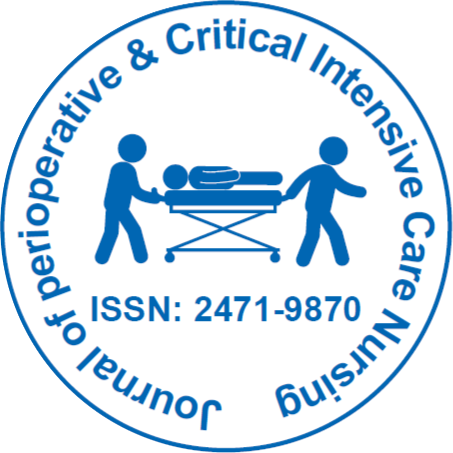
Journal of Perioperative & Critical Intensive Care Nursing
Open Access
ISSN: 2471-9870
+44-77-2385-9429

ISSN: 2471-9870
+44-77-2385-9429
Perspective - (2021)Volume 7, Issue 4
Heart disease is the largest cause of mortality worldwide; the future role of nurses is exciting, and it necessitates education and experience in order to investigate high-quality coronary heart disease nursing care. Nurses should be role models in the fight against heart disease, but they must also promote the worldwide warning disease known as coronary heart disease. Cardiac nurses are essential in the prevention, diagnosis, and treatment of heart disease, heart attacks, and other cardiovascular problems. Cardiac nurses are important in the fight against heart disease since they are needed not just to care for patients but also to promote good lifestyle choices. Specialist nursing care has been demonstrated to enhance outcomes for patients with chronic heart failure (CHF), lowering the frequency of unplanned readmissions, duration of stay, hospital expenses, and mortality. Coronary artery disease is the most common cause of CHF. Once cardiac damage has occurred, the risk of heart failure can be decreased by providing a supportive environment. While cardiac rehabilitation clinics allow patients to monitor their medicine usage, their primary goal is to improve their physical well-being after a heart attack. Furthermore, data suggests that even for patients with documented heart failure, general practitioners are often hesitant to commence appropriate therapies and up-titrate prescription dosages [1].
The human resource shortage in healthcare is widespread around the world. India, like many other low- and middle-income countries, is experiencing a labour shortage in the health sector. Brain drain, or the flight of doctors and nurses from developing countries to affluent countries, is one of the biggest contributors to the health workforce crisis. Another key factor is the underproduction of health workers. Since India's independence, substantial attempts have been made to address the country's health worker shortage. However, there are shortages in all typesof health workers at various levels. Given the increased prevalence of NCDs and the ongoing lack of HRH, job shifting is a top issue. The purpose of this study was to learn about nurses' perceptions of the hurdles to making CVD risk assessment a routine practise for them. Nurses who took part in a task shifting trial in which they were taught in CVD risk assessment and communication were included in this qualitative analysis, with the conclusion that task shifting was helpful for both primary and secondary CVD prevention. However, barriers must be recognised and addressed in order to maximise the use of nurses in CVD risk assessment and communication and to continue doing so in routine practise. As a result, a qualitative method was used to analyse the perceptions and challenges of participating nurses in terms of implementing this into everyday practise [2].
Acute heart failure patients benefit from early diagnosis, close monitoring, and management by experienced heart failure teams, which include a heart failure nurse specialist and cardiology ward nurses who have received adequate training to support safe practise. The heart failure nurse specialist, as a member of the team, is well positioned to provide outreach to patients throughout the acute heart failure pathway, which necessitates close collaboration with nurses in non-cardiology specialist areas such as the emergency department and general medical/care-of-the-elderly wards.
Citation: Tiwari A (2021) The Role of a Nurse in Heart Diseases. J Perioper Crit Intensive Care Nurs 7: 178. doi:10.35248/2471-9870.21.7.178
Received: 15-Jun-2021 Accepted: 22-Jun-2021 Published: 29-Jun-2021 , DOI: 10.35248/2471-9870.21.7.178
Copyright: © 2021 Tiwari A. This is an open-access article distributed under the terms of the Creative Commons Attribution License, which permits unrestricted use, distribution, and reproduction in any medium, provided the original author and source are credited.